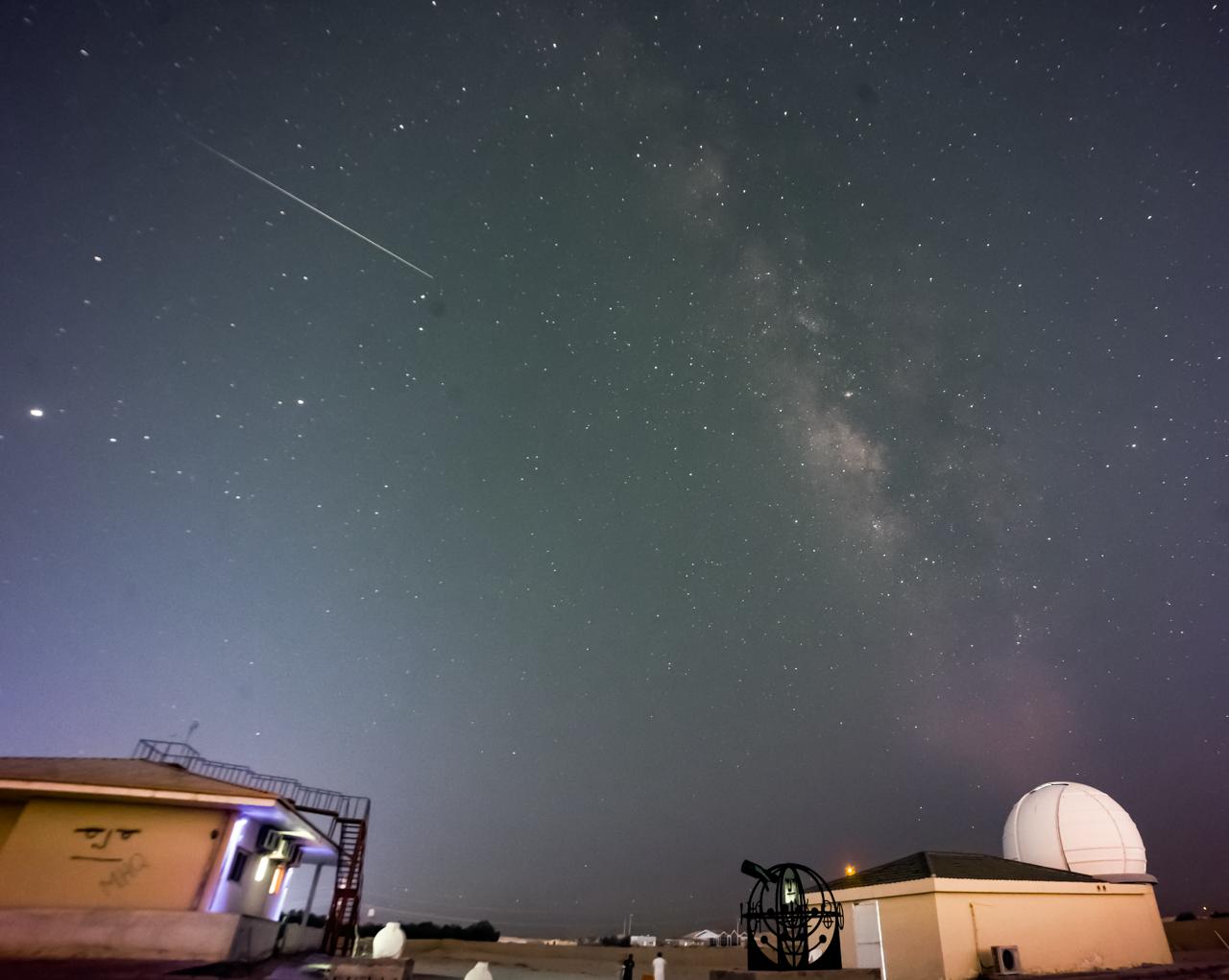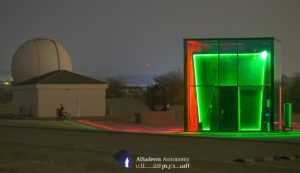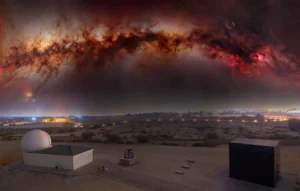One of the most awaited meteor showers of the year will grace the August skies some time in the middle of the month–the Perseids. Meanwhile, planet Saturn returns to the sky and will be at its brightest and in a rare treat, two Full Moons will book-end a what could be an immensely sweltering month for residents in the UAE.
Al Sadeem Observatory is closed in August but will resume operations come September. Book your visit ahead of time to see your favorite object in space. We offer a guided Observatory tour and night sky observation via traditional and smart telescopes, like Vespera and Stellina. Al Sadeem Astronomy is the only distributor of these smart telescopes here in the Middle East. You can place an order or inquiry here.
Check out the list of night sky companions this month, and some dates worth taking note of to help you plan your stargazing.
Observable Objects – August 2023
Planet Parade
1. Saturn
Saturn, the majestic ringed planet, is set to grace the evening sky after sunset in the east, providing a captivating celestial spectacle for stargazers and astronomy enthusiasts alike. With its distinctive rings visible through a telescope, Saturn offers a mesmerizing sight that never fails to awe and inspire wonder.
On the 27th of August, a special event known as the opposition will occur, where Saturn will be directly opposite the Sun in the sky, making it appear brighter and more prominent than usual. This astronomical event marks the perfect time to observe Saturn and its beautiful ring system in all its glory.
2. Planet Mercury
If you think weather here on Earth is unbearable, wait ‘til we get to Mercury. The temperature on the planet Mercury exhibits extreme variations, offering a stark contrast between its scorching daytime and freezing nighttime conditions.
During its scorching days, the temperature can soar to 430 degrees Celsius, making it one of the hottest places in our Solar System. However, as the sun sets in Mercury, the planet experiences an abrupt plunge in temperature, with its nights reaching an astonishingly frigid minus 180 degrees Celsius.
On 2nd of August don’t miss the wonderful opportunity to observe this dramatic planet Mercury. On that specific date, Mercury will reach a maximum height of 17 degrees above the horizon just after sunset, and will showcase its great evening apparition. At this time, Mercury will shine at an impressive 0.3 magnitude, adding to its brilliance in the twilight sky.
Moon
Full Moon – 01 August 2023
Last quarter – 08 August 2023
New Moon – 16 August 2023
First Quarter – 24 August 2023
Full Moon – 31 August 2023
August Astronomical events
August Full Moons
This month is serving us two Full Moons, with the first one gracing the night sky on the 1st of August, followed by the second on the 31st of August. What makes these Full Moons even more extraordinary is that they coincide with the moon’s closest approach to Earth in its orbit, creating what is known as a supermoon.
During this time, the Moon appears larger and brighter than usual, adding to the enchantment of the night sky. It’s an excellent opportunity for everyone to witness the beauty of the celestial dance between the Earth, Moon, and Sun, and to marvel at the splendor of the supermoon on these special occasions.
Moon Saturn Conjunction
Saturn comes back in the night sky in August, and will be pairing up twice with the Moon on the 3rd of August and the 30th of August, in their closest approach / conjunction. During both these days, the Moon and Saturn will appear to share the same right ascension, creating a stunning alignment in the night sky. Although they will be separated by a distance of approximately 2.29 degrees, don’t worry—there is no chasing each other.
While the Moon is our familiar natural satellite, situated at a relatively close distance of around 300,000 kilometers from Earth, Saturn, the majestic ringed planet, lies much farther away at a staggering 1.2 billion kilometers. Despite this vast difference, the two celestial bodies will appear remarkably close to each other, a mesmerizing visual appearance that showcases the wonderful chasing effect.
Perseid meteor shower 2023
The Perseids meteor shower is one of the most anticipated and popular annual meteor showers, occurring between late July and mid-August. This spectacular celestial event is caused by debris left behind by Comet Swift-Tuttle, which burns up upon entering Earth’s atmosphere, creating bright streaks of light across the night sky. With its peak around August 13th, the Perseids can produce an impressive display of up to 100 meteors per hour under optimal conditions. From Abu Dhabi, at the peak of the shower the radiant will fall at the altitude of 56° above your horizon, that may help the observers to see up to 125 meteors per hour at the shower’s peak.
Sunrise & Sunset
Date Sunrise Sunset
01 August 2023 5.48 AM 07.06 PM
31 August 2023 06.00 AM 06.42 PM




